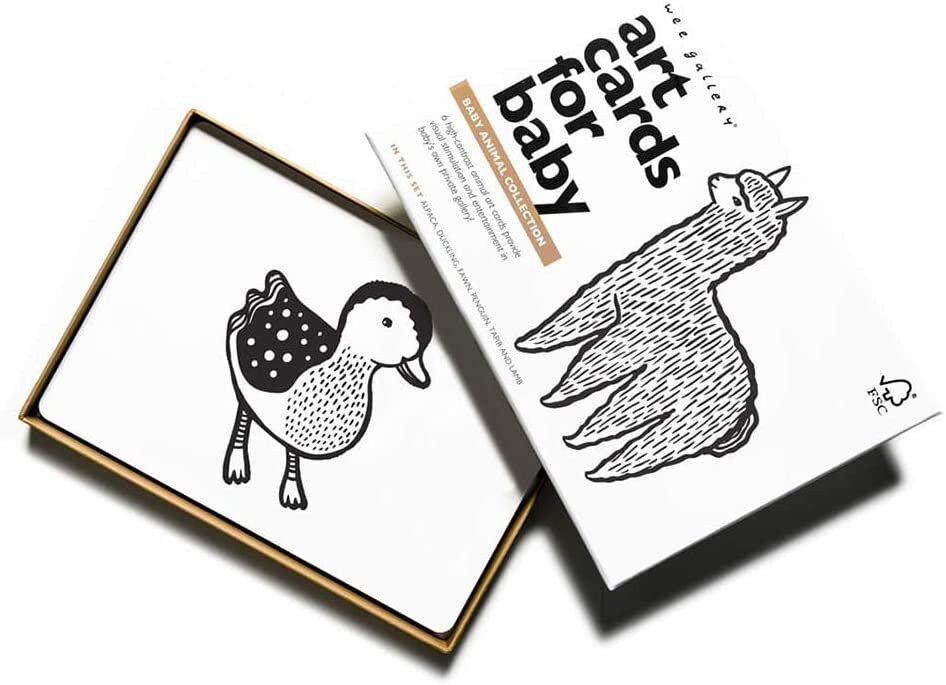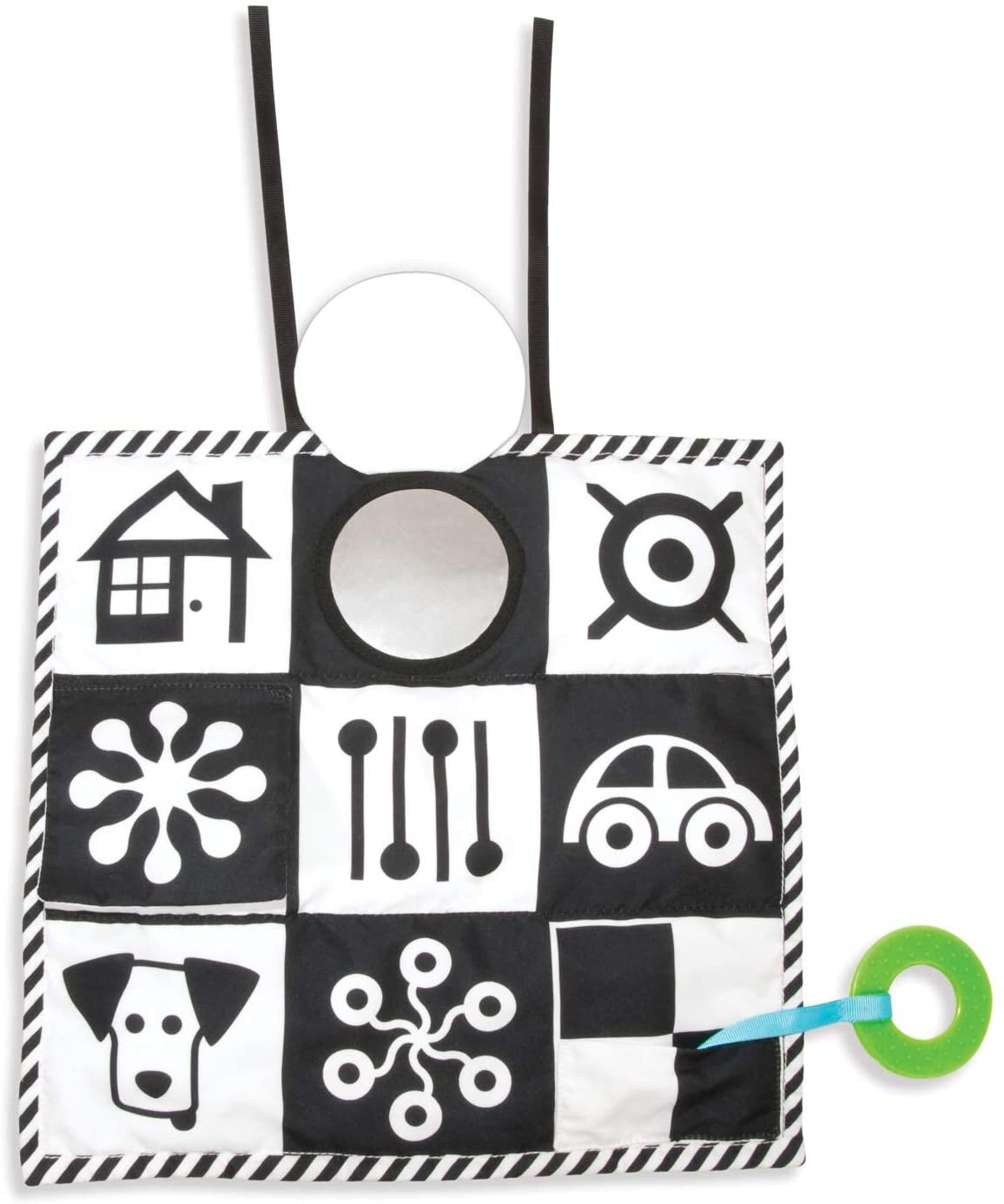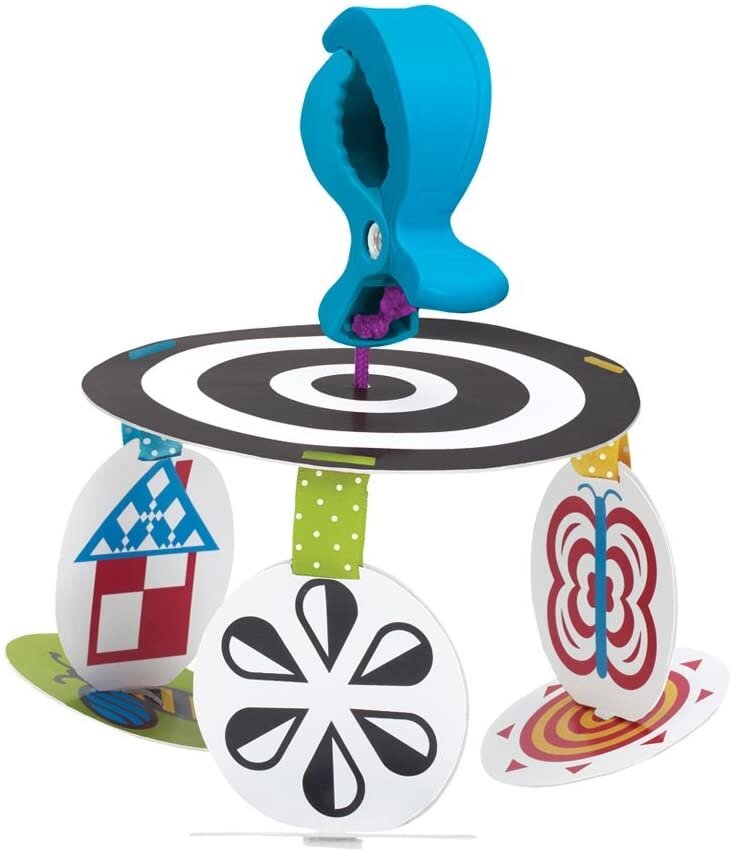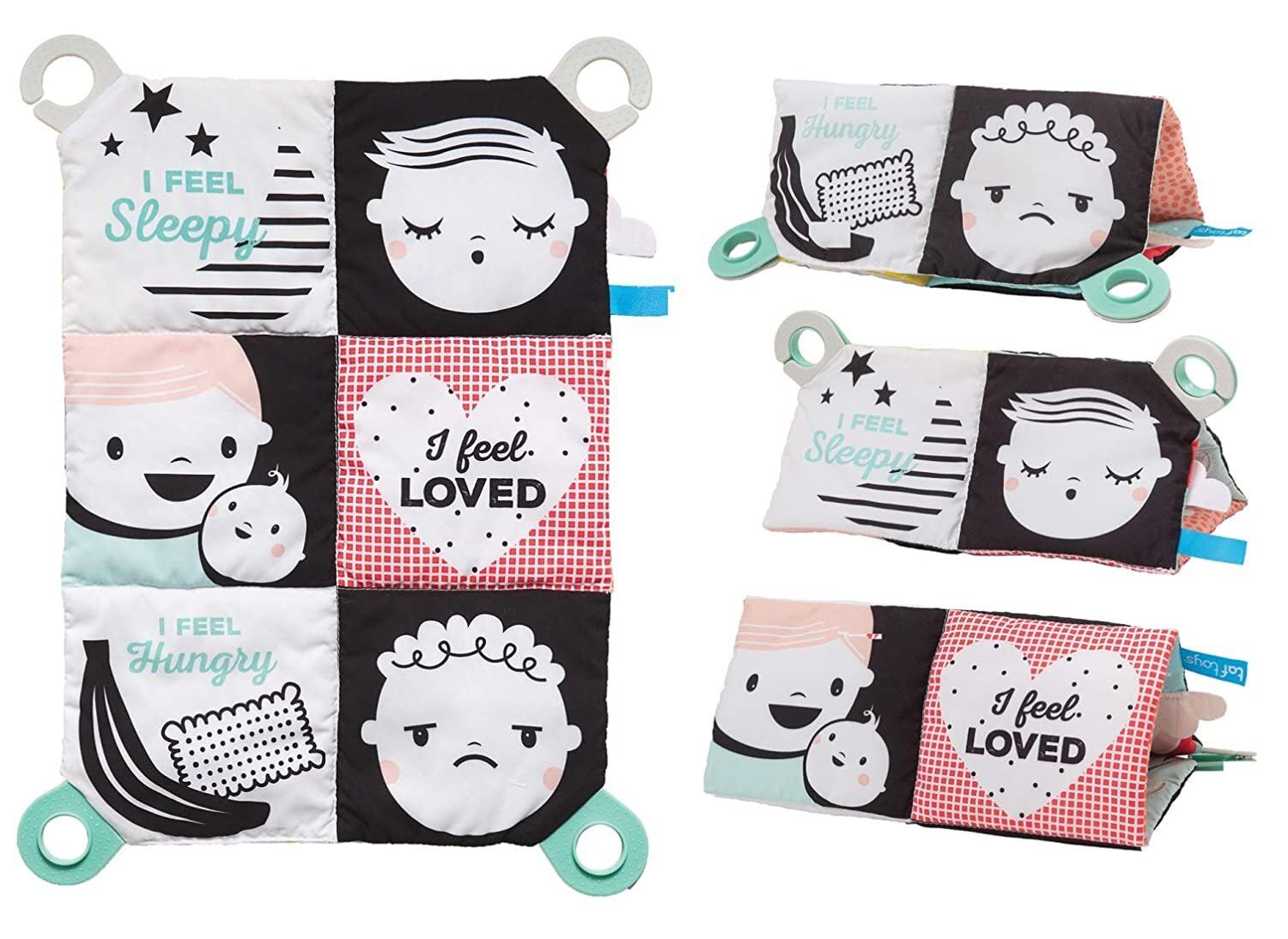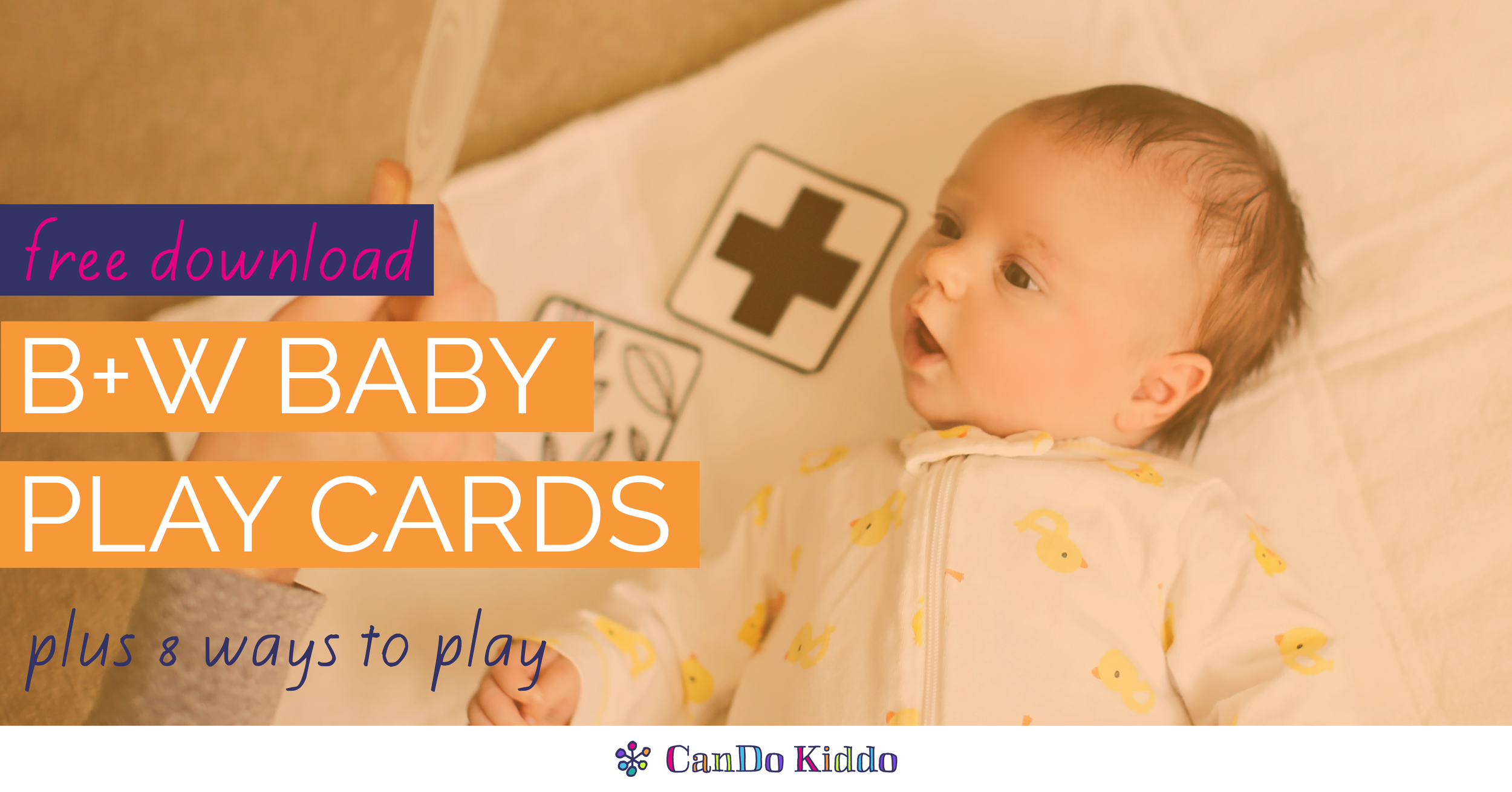What Can My Baby See? A Parent's Guide To Newborn Vision
You know what’s pretty amazing about your new baby? Your brand new little one is hardwired to be interested in things that promote their learning and development. Awesome, right? You can trade the nagging “am I doing enough?” worry in favor of:
“Wow - look at what my baby can do for their own development!”
The answer? LOOKING. Visual play is one of the best ways to engage your a sighted baby during active awake times. Most newborns are very interested in visual play because it promotes the important learning and development that naturally happens with their sense of sight. By looking intently at things, your little one is executing their individual developmental blueprint.
WHY VISUAL PLAY IS IMPORTANT FOR SIGHTED INFANTS
It’s assumed that it will take time for your baby to learn to roll and sit up and walk. But did you know that your baby also has to learn to use their senses?
Some senses, like touch and hearing are more developed at birth. But others, like your baby’s sense of vision, need time and practice to get precise and accurate.
In fact, if you think about the seven primary senses (touch, taste, smell, sight, hearing, movement and pressure/stretch) the sense of sight is the only one that isn’t stimulated much in the womb. That means it’s important for your baby to have lots of chances to practice using their vision in the early weeks and months of life.
WHAT CAN YOUR NEW BABY SEE?
In the first 3 months of life, sighted babies tend to be nearsighted and are best able to see objects close up (8-10” from their face).
The quality of their vision is poor so objects appear blurry. They are best able to see simple, bold, high contrast (think black and white or red and white) images, like these:
THE VISUAL SKILLS BABY IS WORKING ON
It's easy to see a newborn staring at a toy or a face and not think much of it. But this "baby play" as simple as looking at an object promotes important newborn visual skills.
In the first 3 months, your baby’s eye muscles typically develop to:
hold a steady gaze (instead of eyes darting around)
keep eyes working together (instead of crossing or drifting apart)
focus the eyes on objects at different distances
follow moving objects with the eyes
In addition to eye muscle development, a sighted baby’s brain is gaining sense of and meaning from all the visual input received from the eyes. Child development nerds like me call that Visual Sensory Processing.
Once past the newborn stage, 3-6 month old babies usually are developing depth perception as they reach, roll and generally become more able to interact with objects around them. Color vision also usually improves greatly in this age range.
THE BEST TOYS FOR NEWBORN VISUAL PLAY
Until you fully appreciate how your baby sees and why visual play is so important, it can be easy to offer toys that aren't a great match for newborn vision, place toys too far for baby to really see or not notice your baby working on visual skills throughout awake times.
The best toys for newborn visual play feature simple, high contrast images and can be placed within 12" of baby. If the toys move, they do it very slowly (like a mobile). And it’s extra helpful if baby can interact with the toy in different body positions (laying on the back, Tummy Time, sidelying) and in different spots around the house and/or when on the go.
Flashing light toys may capture baby's visual attention but don't support the visual skills they're working on. They may also be overstimulating to a newborn and therefore I don't recommend them for babies in the first 3 months. If you do have toys with flashing lights keep them turned off or use them in moderation while monitoring baby for signs of overstimulation like fussiness and visual avoidance.
Everyone’s budget and lifestyle is different so I’m sharing black and white toys for home, for travel and at several different price points - including free. Toy links below are affiliate links, which means any purchase you make supports the creation of CanDo Kiddo resources at no additional cost to you.
My favorite collection of developmentally-appropriate toys for baby are The Play Kits from Lovevery. The Looker Play Kit (birth to 8 weeks) includes 5 black and white high contrast play items. And the Charmer Play Kit (months 3 & 4) includes several more! Buy individual kits or subscribe and have expert designed toys and a developmental play guide delivered to your door every 2 months.
photo used with permission from Lovevery
Here are some other black and white toys I’ve used and loved (clicking on toy image for more product details or to purchase).
I’ve created some printable black and white play cards for my babies and I’d love to share them with you...at no cost. To download your free black and white play cards, click here or on the image below:
For the first 6-8 weeks, I like to tape or hang simple black and white picture cards in various positions from a sighted baby’s activity gym to encourage visual exploration. If I notice a baby has a head-turning preference or flat spot forming on their head, I’ll strategically place black and white picture cards on their non-preferred side, leaving their preferred side empty and boring.
Look at what this 3 week old can do during active awake time with black and white play cards taped to their activity gym:
Get Curious About What Your Kiddo Can Do:
Can you notice the moment your baby’s eyes lock on a black and white object?
How does your baby’s body move when their vision is fixed on a black and white object?
Do you see a reflexive “fencer pose”- head turned toward outstretched arm with other arm bent toward back of head? This reflex appears and then typically integrates / disappears during infancy.
Even without any black and white toys or cards, do you notice your baby using and developing their newborn visual skills by looking at your boldly patterned shirt or the high contrast of a dark ceiling fan on the light ceiling?





